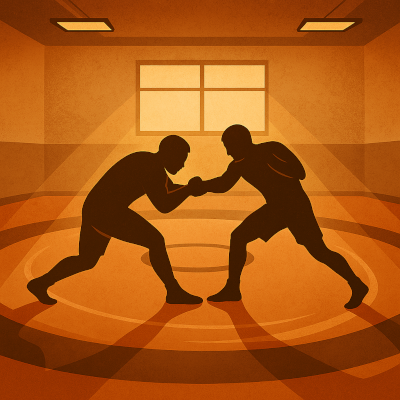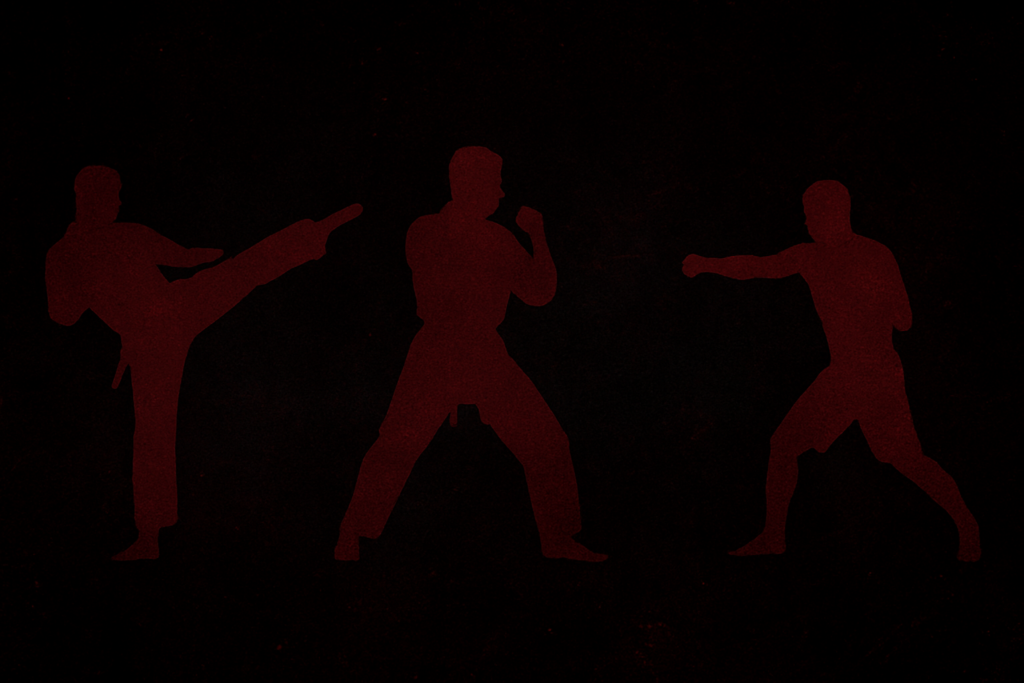The Oldest Form of Combat and the Foundation of Control
🧠 A Brief History of Wrestling

Wrestling is often considered the world’s oldest martial art — a test of strength, balance, and technique that predates recorded history.
Depictions of wrestling appear in ancient Egyptian tombs (c. 2400 BCE) and in Sumerian carvings showing two athletes grappling for dominance.
It was one of the main events in the ancient Olympic Games (776 BCE) and later became a key element in Greek Pankration, the ancestor of modern mixed martial arts (MMA).
Over millennia, wrestling evolved across cultures — from Greco-Roman in Europe to Freestyle and Folkstyle in America and traditional grappling arts in nearly every part of the world.
Despite the variations, all forms share a common goal: to control, pin, or submit one’s opponent using pure technique and leverage.
🥋 Main Characteristics of Wrestling
- Core Principle: Control your opponent through positioning, leverage, and movement.
- Training Focus: Takedowns, transitions, escapes, and pins.
- Philosophy: Strength through discipline, technique through repetition.
- Objective: Neutralize and dominate an opponent using skill, not strikes.
Unlike striking martial arts such as Muay Thai or Boxing, wrestling is a grappling art that rewards precision, pressure, and persistence.
⚔️ The Philosophy of Wrestling
Wrestling is more than a contest of strength — it’s a study in mental toughness and self-control.
It teaches you to keep fighting when exhausted, to stay focused under pressure, and to respect every opponent.
Legendary Olympic champion Dan Gable said it best:
“Once you’ve wrestled, everything else in life is easy.”
Wrestling’s greatest lessons come not from victory, but from enduring struggle and mastering resilience.
🏯 Major Styles of Wrestling
There are several major wrestling styles practiced worldwide — each with distinct rules and techniques.
| Style | Origin | Key Characteristics |
|---|---|---|
| Greco-Roman Wrestling | Ancient Greece; modernized in 19th-century Europe | Only upper-body holds are allowed (no leg attacks). Emphasizes throws and control from clinch. |
| Freestyle Wrestling | Originated in 19th-century England; adopted in global competition | Allows attacks to both upper and lower body. Points for takedowns, reversals, and exposure. |
| Folkstyle Wrestling (Collegiate) | Developed in the U.S. | Focuses on control, escapes, and riding time. Used in high school and college competition. |
| Catch Wrestling | Late 19th-century England | Combines pins and submission holds; a direct ancestor of modern grappling and MMA. |
| Sumo Wrestling | Japan | Objective is to push opponent out of ring or force contact with the ground using balance and explosiveness. |
| Traditional Wrestling Styles | Worldwide (e.g., Shuai Jiao in China, Pehlwani in India, Ssireum in Korea) | Folk styles emphasizing throws, clinches, and cultural heritage. |
All share a universal truth: wrestling rewards persistence and control above all else.
💪 Training and Conditioning
Wrestling is one of the most physically demanding martial arts. Training combines explosive movement, cardiovascular conditioning, and technical drilling.
Typical training includes:
- Drilling Takedowns – perfecting entries and finishes.
- Live Sparring – constant resistance builds timing and adaptability.
- Strength & Conditioning – explosive lifts, grip training, and core work.
- Technique Chains – connecting transitions seamlessly under pressure.
The result? A balance of power, agility, endurance, and mental fortitude unmatched in most sports.
🧍♂️ Who Can Practice Wrestling?
Wrestling can be practiced by athletes of all ages and fitness levels.
Its fundamentals — balance, leverage, and movement — apply to nearly all physical activities.
| Group | Benefits |
|---|---|
| Children | Builds discipline, coordination, and respect for effort. |
| Adults | Enhances strength, endurance, and confidence. |
| Seniors | Modified, low-impact drills improve stability and core control. |
With proper coaching and safety, wrestling is both physically rewarding and mentally empowering.
🧘 Benefits of Practicing Wrestling
Physical Benefits:
- Develops full-body strength and explosiveness
- Improves agility, coordination, and stamina
- Builds functional power and endurance
Mental Benefits:
- Forges resilience, discipline, and focus
- Teaches composure under fatigue and pressure
- Encourages self-reliance and humility
Practical Benefits:
- Provides excellent self-defense skills through control and takedowns
- Translates easily into other martial arts (BJJ, Judo, MMA)
- Builds teamwork, sportsmanship, and respect
🥇 Wrestling as a Sport
Wrestling remains a cornerstone of both Olympic and amateur competition.
The sport rewards control, technique, and relentless determination — with no shortcuts or luck involved.
It’s also the foundation of many MMA champions, proving its effectiveness in real combat and modern sport.
🌟 Why You Should Try Wrestling
Wrestling is the purest test of will, skill, and strength.
It builds toughness, focus, and self-respect — qualities that extend beyond the mat.
🤼 In wrestling, victory isn’t just over an opponent — it’s over your own limits.

